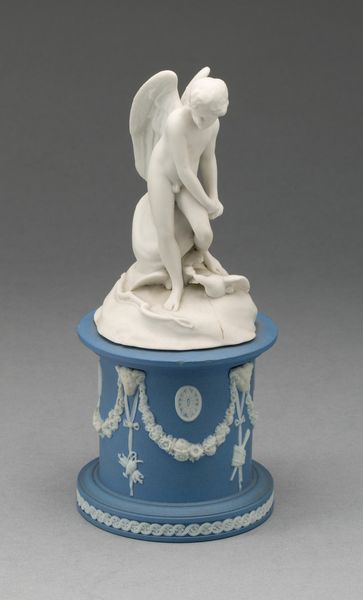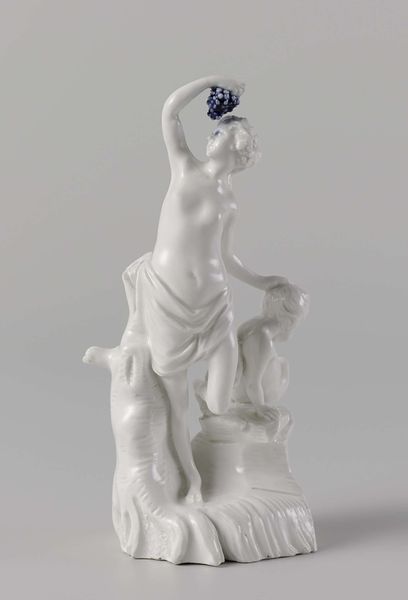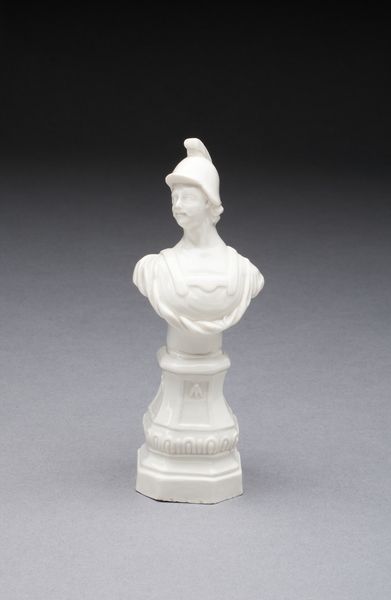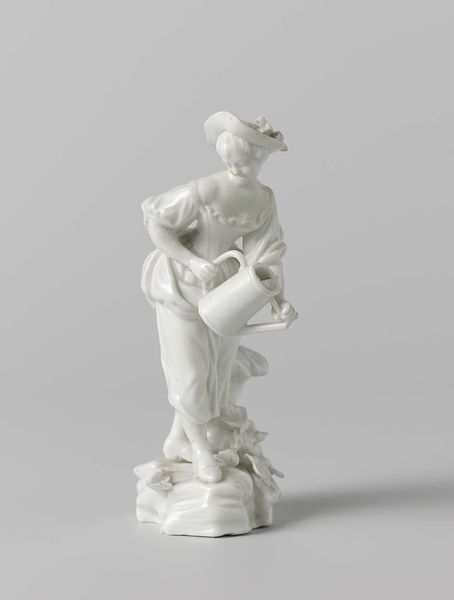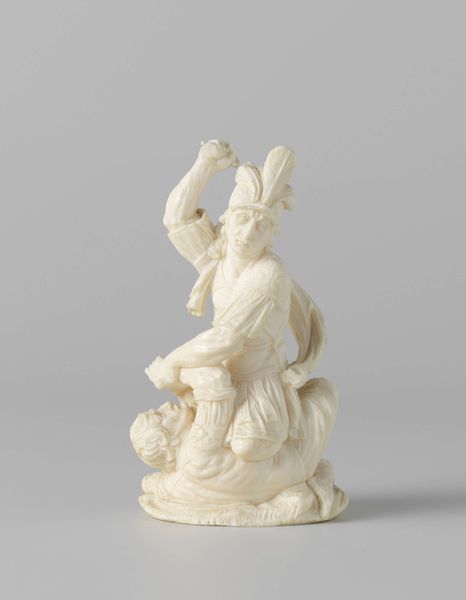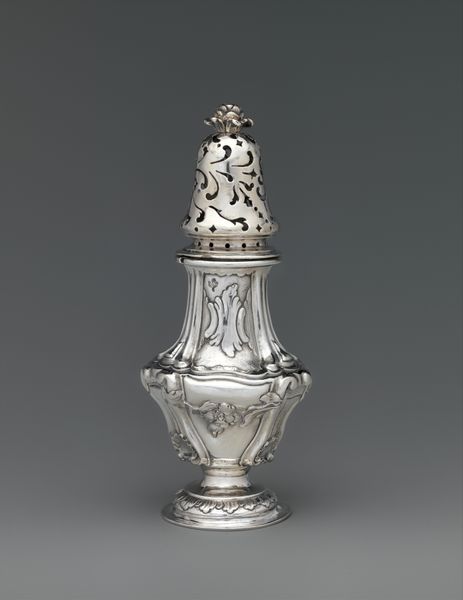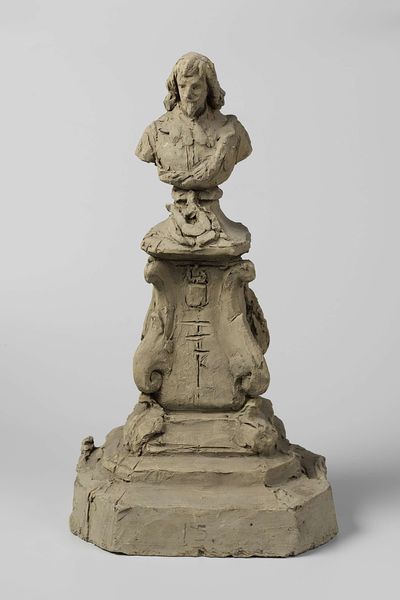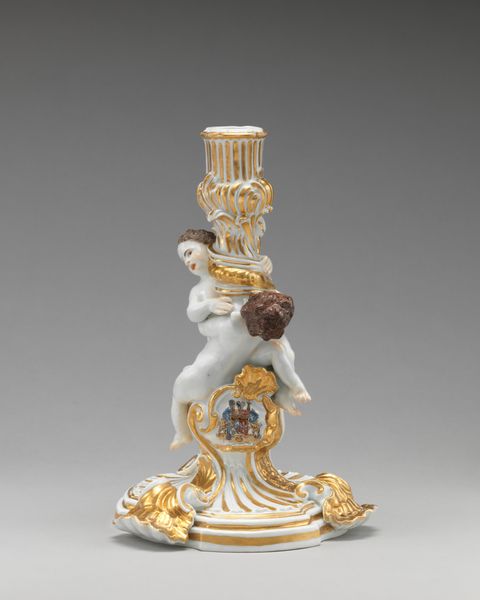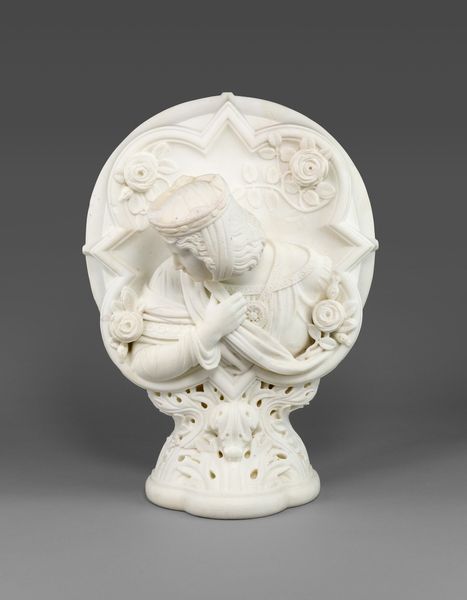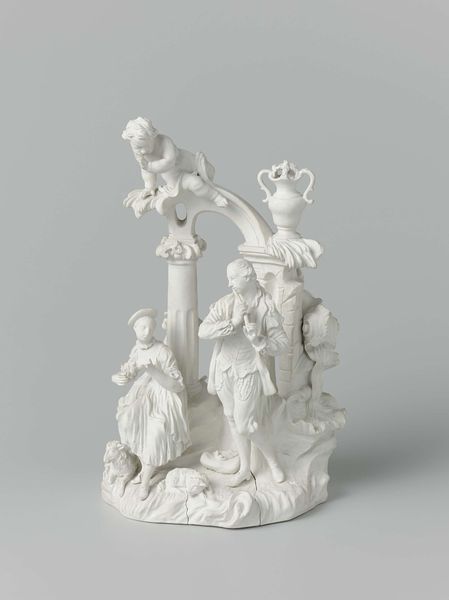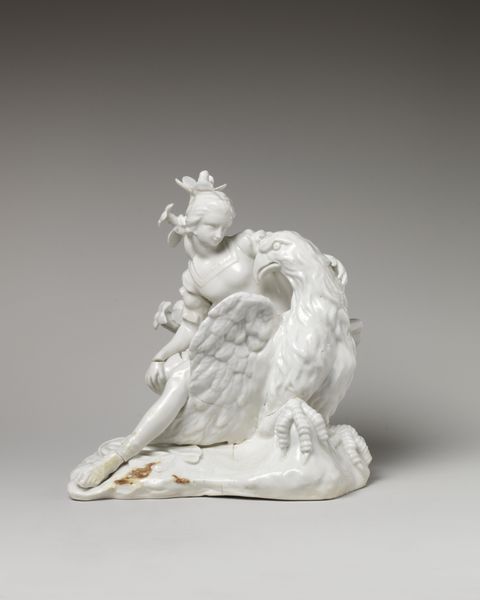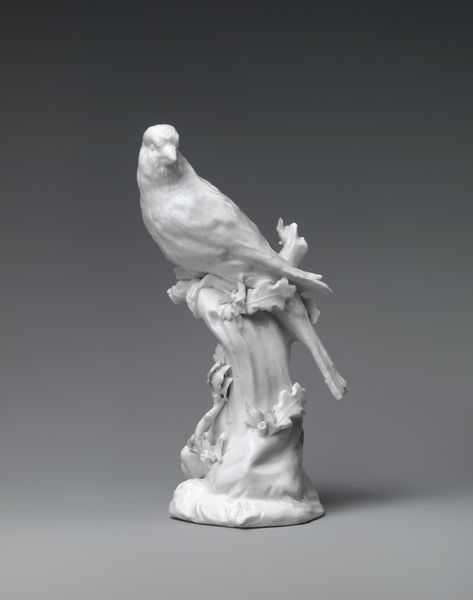
ceramic, porcelain, sculpture
#
ceramic
#
porcelain
#
sculpture
#
decorative-art
#
rococo
Dimensions: confirmed: 9 13/16 × 6 1/2 × 6 1/2 in. (25 × 16.5 × 16.5 cm)
Copyright: Public Domain
Editor: So, this is a porcelain candlestick, crafted around 1740-1750 by the Meissen Manufactory. It's currently housed at the Metropolitan Museum of Art. I’m really struck by how ornate it is, all those delicate floral details. How do you interpret this piece, especially given its Rococo style? Curator: This candlestick is brimming with symbolic richness. The Rococo era, particularly in porcelain work like this, reveled in delicate asymmetry and naturalistic forms. Do you notice how the flowers aren’t just decoration but seem to be climbing and twisting around the form? Editor: Yes, it almost feels like the candlestick is a trellis and the flowers are growing up it. Curator: Precisely. Consider that in this era, flowers were intensely symbolic. Each bloom, each twist of the vine, could represent ideas of love, mortality, or even social status. What might strawberries symbolize do you think? Editor: I guess fertility and abundance? It feels…over the top! But also delicate at the same time? Curator: That tension between fragility and abundance is key to understanding its cultural impact. Imagine how this candlestick would function, placed in a dimly lit room. The candlelight dancing and flickering against the stark white porcelain and reflecting in those many flowers, its whiteness almost daring one to stain it! What kind of statement about power do you think it communicates? Editor: Wow, I didn't consider the display setting like that before! Thinking about it…the stark white porcelain, the implied expense, I guess it’s telegraphing status. And perhaps it’s speaking to ideas about fragility and ephemerality...like the flame it holds. Curator: Exactly! The artistry inherent to the candlestick serves as an insight to history and a cultural memory; it speaks volumes, doesn't it? Editor: It really does. I’ll definitely see these kinds of objects differently now.
Comments
No comments
Be the first to comment and join the conversation on the ultimate creative platform.
